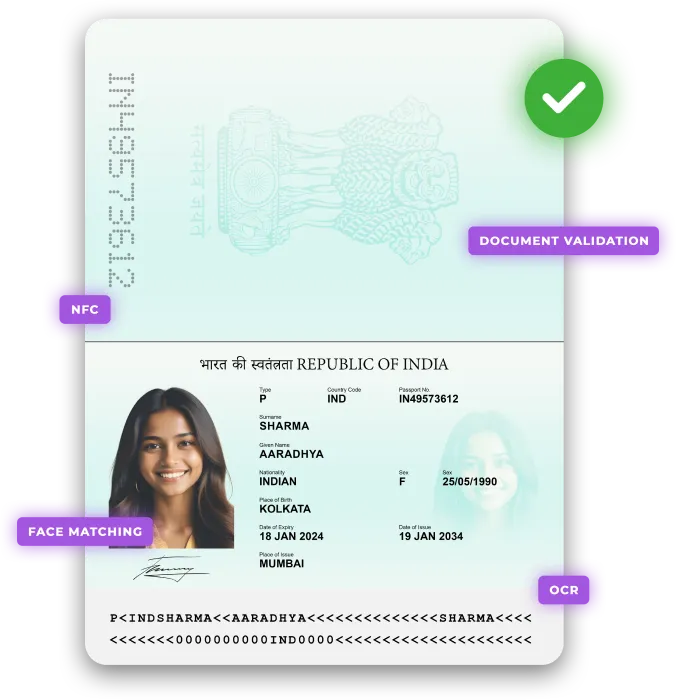COVERAGE
India Focused Compliance Solutions
Engineered for India’s compliance environment, our tools help you navigate local laws and regulations with confidence, clarity, and operational ease.

Trusted by 1,700+ clients globally









Who are the regulators in India?
The Directorate of Enforcement (ED)
A specialised agency under India’s Ministry of Finance enforcing FEMA (1999) and PMLA (2002) by investigating foreign exchange violations, money laundering, and related financial crimes.
The Financial Intelligence Unit (FIU)
India’s FIU collects, analyzes, and disseminates suspicious transaction information to domestic enforcement agencies and international counterparts to strengthen national AML efforts.
The Reserve Bank of India (RBI)
India’s central bank regulates financial institutions, enforcing AML/CFT requirements, strengthening risk controls, and ensuring safe, compliant banking practices nationwide.
Securities and Exchange Board of India (SEBI)
Regulates India’s securities markets, enforcing AML/CFT standards, preventing fraudulent and manipulative practices, and supervising intermediaries to maintain integrity and transparency while operating in capital markets.
Who is regulated in India?
Financial Institutions (FIs)
Who are classified as FIs?
Banks
NBFCs
Payment/e‑Money Institutions
Asset Managers
Insurance Firms
Stock Brokers
Other Financial Intermediaries
Designated Non-financial Businesses and Professions (DNFBPs)
Who are classified as DNFBPs?
Precious Metals/Jewellery Dealers
Auditors
Real Estate Brokers
Lawyers
Trust Service Providers
Expectations for regulated firms
Entities must apply a risk‑based approach, conduct Customer Due Diligence (CDD) to verify identity and beneficial owners, conduct transaction monitoring and file STRs with FIU‑IND
Enhanced Due Diligence (EDD) is required for high‑risk relationships, and records must be retained for at least 5 years in many cases.

AML/KYC Checklist for India
- Verify identity of natural and legal persons; identify and check beneficial owners.
- Conduct customer risk profiling (PEPs, sanctions exposure, geography, business/products) and apply EDD when risk is higher.
- Use acceptable documents (Aadhaar, PAN, passport) or video‑based KYC in permitted cases; ensure first payment is from a bank account in the client’s name.
- Maintain CDD and transaction records per statutory retention rules and keep systems for transaction monitoring and review.
Supervision & Enforcement
Regulators such as RBI, SEBI and IRDAI supervise compliance through on‑site/off‑site inspections and can impose penalties, licence restrictions or business bans for non‑compliance.
Fines in recent cases have ranged up to tens of millions of rupees; criminal penalties including imprisonment are possible for serious breaches.

Supported ID documents from India
Aadhaar Card
Idenfo can verify the Aadhaar card, issued by the Unique Identification Authority of India, ensuring precise data matching and full compliance with Indian regulatory requirements and identity verification standards.
Document Verification
- Evaluates document quality by checking for glare or blur.
- Identifies any signs of tampering or forgery within the document.
- Confirms the authenticity of hologram prints.
- Extracts key data using optical character recognition (OCR).
NFC Scanning
- Reads data from the identity card's NFC chip.
- Verifies the NFC chip data for integrity and authenticity.


Indian Passport
Idenfo verifies Indian passports issued by the Ministry of External Affairs, confirming the holder’s name, date of birth, and contact details as part of Enhanced Due Diligence for KYC in India.
Document Verification
- Evaluates document quality by detecting glare or blur.
- Identifies potential tampering or forgery.
- Verifies the document’s format for accuracy.
- Cross-checks data against the MRZ code and hologram.
NFC Scanning
- Reads data from the passport's NFC chip.
- Verifies the NFC chip data for integrity and authenticity.
How it works

Document Capture
Scan and extract key identity details from official documents.

Liveness Check
Ensure the person is real and matches their verified ID photo.

Data Verification
Cross-check personal details against trusted government sources.

Risk Screening
Assess AML and sanctions risks before onboarding customers.

User Authentication
Simplify returning logins with secure biometric authentication.

